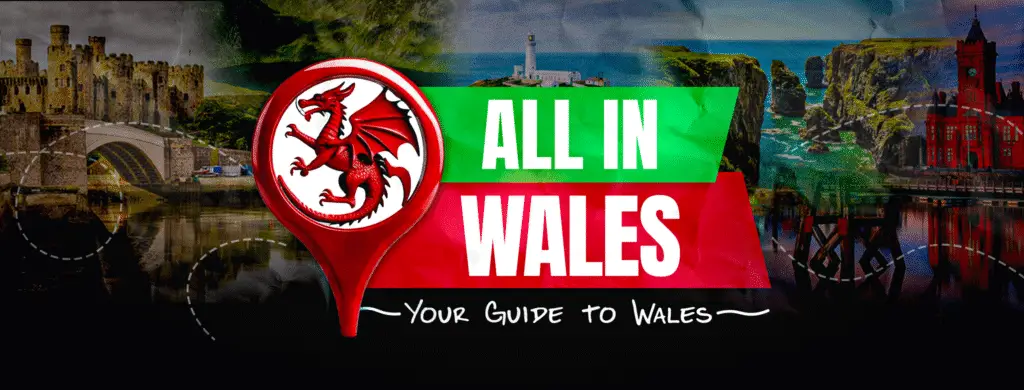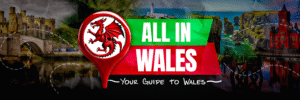
Wales: A Snapshot of Population & Geography
Population Insights:
-
Population: Approximately 3.2 million people (as of recent estimates), reflecting steady growth.
-
Density: More densely populated in the south (e.g., Cardiff, Swansea, Newport) and along the north-east coast, with vast, sparsely populated areas inland.
-
Urban Hubs: Key cities include Cardiff (the capital and largest city), Swansea, and Newport in the south, and Wrexham and Bangor in the north.
-
Language: Bilingual nation with Welsh and English as official languages; Welsh is spoken by a significant portion of the population, particularly in the west and north.
Geographical Highlights:
-
Size: Covering approximately 20,779 square kilometres (8,023 square miles).
-
Coastline: Over 2,700 kilometres (1,680 miles) of stunning and diverse coastline, including rugged cliffs, sandy beaches, and estuaries.
-
Mountains: Dominated by three National Parks: Eryri (Snowdonia) in the north (home to Yr Wyddfa, the highest peak in Wales), the Brecon Beacons (Bannau Brycheiniog) in the south, and the Pembrokeshire Coast.
-
Rivers: Major rivers include the Severn (partially in Wales), Wye, Teifi, Tywi, and Usk.
-
Diverse Landscapes: From the agricultural lowlands of the Vale of Glamorgan to the wild uplands of the Cambrian Mountains and the dramatic Gower Peninsula.
History of Wales
Wales possesses a rich and complex history, distinct from its English neighbour, characterised by periods of independence, fierce resistance, and eventual integration.
Prehistory and Roman Period (c. 250,000 BC – c. 400 AD): Evidence of early human habitation in Wales dates back over 200,000 years. The Neolithic period saw the development of farming and the construction of megalithic structures. During the Bronze Age, Wales was a significant centre for metalworking, notably copper and gold. The Iron Age brought about the construction of numerous hillforts by distinct Celtic tribes, such as the Silures and Ordovices, who fiercely resisted the Roman conquest. The Roman occupation, initiated in AD 48 and completed by AD 78, was primarily military, with a network of forts and roads. Roman influence was less pervasive in Wales than in other parts of Britain, with limited urbanisation. Effective Roman rule ended around 383 AD.
Post-Roman and Early Medieval Period (c. 400 – 1066 AD): Following the Roman withdrawal, Wales fragmented into numerous independent Welsh kingdoms, including Gwynedd, Powys, and Dyfed. This “Age of Saints” saw the flourishing of Celtic Christianity and the establishment of influential monasteries. Despite internal strife and Viking raids, Welsh rulers like Rhodri Mawr and Hywel Dda achieved significant territorial control and legal codification. The construction of Offa’s Dyke by the Mercian king Offa in the 8th century marked a defining, though not always static, eastern border for Wales.
High Medieval Period and English Conquest (1066 – 1536 AD): The Norman Conquest of England in 1066 initiated a long period of Anglo-Norman encroachment into Wales. Marcher Lords established powerful lordships along the border, gradually gaining control over Welsh territories. Despite this, strong Welsh principalities continued to exist. The 13th century saw the emergence of powerful native princes, most notably Llywelyn ap Iorwerth (Llywelyn the Great), who united much of Wales and was recognized as Prince of Wales. His grandson, Llywelyn ap Gruffydd (Llywelyn Our Last Prince), was the last independent Prince of Wales. His refusal to submit to Edward I of England led to the full conquest of Wales by 1283. Edward I solidified English control by building a “ring of iron” castles (e.g., Conwy, Caernarfon, Harlech, Beaumaris) and establishing the Statute of Rhuddlan in 1284, which imposed English common law. The title “Prince of Wales” was subsequently bestowed upon the English monarch’s heir.
Rebellion and Union with England (1400 – 1543 AD): Resistance to English rule continued sporadically, culminating in the major uprising led by Owain Glyndŵr (1400-c.1412), who briefly re-established Welsh independence and held parliaments. Though ultimately suppressed, Glyndŵr remains a potent national hero. The accession of the Welsh-descended Henry Tudor (Henry VII), born in Pembroke Castle, to the English throne in 1485, marked a new era. His son, Henry VIII, passed the Laws in Wales Acts (1536 and 1543), formally incorporating Wales into the Kingdom of England. This abolished Welsh legal distinctions, integrated Welsh administration into the English system, and made English the sole language of government and law, significantly impacting the Welsh language’s status.
Modern Period and Devolution (16th Century – Present): Following the Acts of Union, Wales experienced profound social and economic changes. The Industrial Revolution, particularly the growth of coal and iron industries in South Wales, transformed the landscape and demography, attracting mass migration. This period also saw the rise of Nonconformist religion, which played a crucial role in Welsh cultural life and fostered a distinct sense of Welsh identity. The 20th century witnessed the decline of heavy industries but also a resurgence of Welsh nationalism. Significant steps towards self-governance were taken with the establishment of the Welsh Assembly (now Senedd Cymru – the Welsh Parliament) in 1999, gaining increasing legislative powers. Today, Wales operates with a devolved government, retaining its unique cultural identity, language, and parliamentary institutions within the United Kingdom.
Welsh Culture and Language Cymraeg
Wales boasts a vibrant and distinct culture, deeply rooted in its ancient Celtic heritage, language, and shared national identity.
The Welsh Language (Cymraeg)
The Welsh language is arguably the most defining element of Welsh culture. As one of the oldest living languages in Europe, it is spoken by approximately 870,000 people and serves as an enduring link to the nation’s past. Far from being a relic, Welsh is a dynamic language integral to daily life in many communities, particularly in the west and north. Its presence is evident everywhere, from road signs and media (like the Welsh-language TV channel S4C) to education and government. There’s a strong national effort, with initiatives like Cymraeg 2050, to further strengthen and grow the number of Welsh speakers.
Music and Performance
Wales is famously known as the “Land of Song.” Music is deeply embedded in its cultural fabric:
-
Choral Traditions: The tradition of male voice choirs is iconic, emerging from 19th-century chapel choirs and remaining a powerful symbol of Welsh identity, often associated with rugby and national events.
-
Harp Music: The triple harp (telyn deires) is considered the national instrument, with a rich history dating back centuries. Traditional singing, known as penillion, involves a singer improvising a melody over a harp accompaniment.
-
Festivals: Eisteddfodau are central to Welsh culture. The National Eisteddfod of Wales is an annual competitive festival of music, literature, and performing arts, conducted entirely in Welsh. The International Musical Eisteddfod in Llangollen celebrates music and dance from around the world.
-
Modern Music: Wales has produced numerous internationally acclaimed artists across various genres, from opera stars like Bryn Terfel to popular musicians such as Sir Tom Jones, Dame Shirley Bassey, and bands like Manic Street Preachers and Stereophonics.
Literature and Storytelling
Welsh literature boasts a continuous tradition spanning over 1,500 years, making it one of the oldest in Europe.
-
Ancient Roots: Early Welsh poetry, dating from the 6th century (e.g., the work of Aneirin and Taliesin), laid the foundations for a complex and intricate poetic tradition.
-
The Mabinogion: This collection of medieval Welsh tales is a cornerstone of European mythology and prose, featuring a blend of native folklore, legend, and historical elements.
-
Bards: Historically, professional poets (bards) played a vital role, often patronized by Welsh princes and nobility, preserving history and culture through their intricate verse.
-
Modern Authors: Wales has a strong literary output in both Welsh and English, including internationally renowned writers like Dylan Thomas and Roald Dahl.
Symbols and National Identity
Several symbols embody Welsh pride and identity:
-
Y Ddraig Goch (The Red Dragon): The most iconic symbol, prominently featured on the national flag, representing a legendary battle from Welsh folklore and embodying resilience.
-
Leek and Daffodil: Both are national emblems, traditionally worn on St. David’s Day (Dydd Gŵyl Dewi) on March 1st.
-
Welsh Lovespoons: Intricately carved wooden spoons, traditionally given as tokens of affection, now popular gifts and symbols of Welsh craftsmanship.
-
Rugby Union: More than just a sport, rugby is deeply intertwined with Welsh national identity, bringing communities together and often accompanied by passionate renditions of the national anthem, “Hen Wlad Fy Nhadau” (Land of My Fathers).
Traditions and Customs
Welsh culture is also expressed through various customs and celebrations:
-
Nonconformity: The rise of Nonconformist Christianity in the 18th and 19th centuries profoundly shaped Welsh social and cultural life, fostering strong community bonds and contributing to the choral tradition.
-
Cuisine: Traditional Welsh cuisine includes dishes like cawl (a hearty soup), Welsh cakes, and bara brith (speckled bread), often featuring local produce, particularly Welsh lamb.
-
Festivals and Events: Beyond the Eisteddfodau, numerous local festivals, agricultural shows (like the Royal Welsh Show), and community events celebrate Welsh heritage throughout the year.
Overall, Welsh culture is a vibrant fusion of ancient traditions, a resilient language, a passionate love for music, and a strong sense of community and national pride that continues to evolve and thrive.
